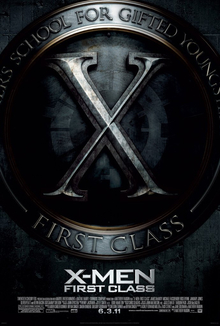Blog #117 – On the Basis of Sex

So we got to see the movie about Supreme Court justice Ruth Bader Ginsburg’s first case in her long battle against sex discrimination in federal court, Moritz v. Commissioners of the IRS. I hope you liked it. I enjoyed it, and thought that it did a good job of accurately portraying the justice’s determination, hopes, and fears as she moved from the academic legal world into the real legal world (interestingly enough, the screenplay was written by Ginsburg’s nephew). According to the New York Times movie review, the only thing the movie got wrong, according to RBG herself, was when she was at a loss for words in front of the judges at the end of the movie.
But with regards to other historical accuracy questions, the movie actually gets a lot right. RBG had actually read three different early drafts of the film written by her nephew, and it was also run by the real Jane Ginsburg, a Columbia law professor. RBG’s only requirements of the film were to “get the law right, and get Marty right.” The film’s portrayal of her helpful, supportive husband, Marty Ginsburg, is accurate as well. He really did get cancer while at Harvard and recovered, and Ruth helped him by attending classes and typing up his reports. Marty Ginsburg was also one of the top tax lawyers in the country, and it was him that brought the Moritz case to Ruth’s attention. One added scene, the moot court at the Ginsburg’s apartment with Mel Wulf, Pauli Murray, and Ruth’s old professor, was not real, nor was the suggestion by Murray that Ruth split up her time with Marty. The last minute edits by Ruth’s secretary, substituting the word “gender” for “sex”, was also accurate. One additional scene, the part where she freezes up and cedes her time to the rebuttal, was also invented. There was no rebuttal, nor a freeze-up, like stated earlier. The portrayal of Mel Wulf, her colleague at the ACLU, however was not accurate. He didn’t treat her the way that it was portrayed in the film nor was he reluctant to tackle additional cases that addressed sexism in the law. Also, Wulf didn’t ask her to write the Reed v. Reed brief nor refuse to let her present it to the Supreme Court, RBG volunteered to do both: write the brief and defend it in court. Also, the scene below where Ruth and Jane meet pioneering lawyer Dorothy Kenyon didn’t happen, but that scene, in addition to the one with Civil Rights activist Pauli Murray, according to the filmmakers was a way of showing that the feminist legal revolution did not begin with RBG but that she was continuing their work. However, RBG didn’t feel that the fictional elements of the film detracted from the overall story: “This film is part fact, part imaginative—but what’s wonderful about it is that the imaginative parts fit in with the story so well,” Ginsburg told NPR’s Nina Totenberg following the New York screening.

Questions to answer (PICK 4 OF 6 TO ANSWER):
- How is Marty Ginsburg the “perfect” or ideal husband to RBG? Give specific examples of their relationship.
- Provide at least three sexist slights or dismissals from the many men in the movie, from Ginsburg’s time at Harvard to searching for a legal job to tackling and arguing the case before the Denver Circuit Court. How would you have handled these slights or dismissals over something that you couldn’t control (in this case, RBG being a woman)? Explain why.
- Does it matter that this movie was directed by a woman? Why or why not?
- How does Jane, Ginsburg’s teenage daughter (and for that matter, Ginsburg’s female law students), capture the spirit of the 1960s and early 70s (and in essence, shows a different kind of feminism than her mother represents)?
- What are the potential dangers or pitfalls of heroically portraying a living, breathing person such as Ginsburg in a movie like this? Explain.
- Explain how this movie epitomizes this quote from the movie (as its theme): “The Court ought not be affected by the weather of the day, but will be by the climate of the era.”
400 words total. Due by Monday, February 4 by class.
Websites consulted:
https://slate.com/culture/2018/12/on-the-basis-of-sex-accuracy-rbg-biopic-fact-fiction.html




